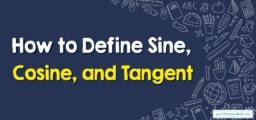The Law of Cosines

The Law of Cosines – Example 2:
\(b=20, a=8, c=14\)
\(cos B= \frac {14^2+8^2-20^2}{2(14)(8)} =\frac {196+ 64 – 400}{176}=\frac{-140}{224}=-0.625\)
Since \(cosB\) is negative, \(B\) is an obtuse angle.
\(B≅128.69 ^\circ \)
Exercises for the Law of Cosines
In the ABC triangle, find the side of c.
1.
2.
3.
- \(\color{blue}{31.12}\)
- \(\color{blue}{44.68}\)
- \(\color{blue}{21.49}\)
Related to This Article
More math articles
- FREE ParaPro Math Practice Test
- 4th Grade PSSA Math FREE Sample Practice Questions
- The Ultimate NM-MSSA Algebra 1 Course (+FREE Worksheets)
- Number Properties Puzzle – Challenge 15
- Full-Length PSAT Math Practice Test
- How to Multiply and Divide Rational Numbers
- Hоw to Gеt a Great Sсоrе оn thе SAT Math Test
- Writing Functions
- How to Study Math Like a Pro
- The Ultimate 6th Grade LEAP Math Course (+FREE Worksheets)























What people say about "The Law of Cosines - Effortless Math: We Help Students Learn to LOVE Mathematics"?
No one replied yet.